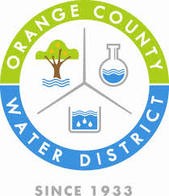
Mention the phrase hydraulic fracturing, and one pictures the dust-swept plains of North Dakota, or maybe Wyoming. But perhaps some would be surprised to know that the practice, known colloquially as fracking, is already taking place in Orange County's backyard, with future sites in the heart of the county under consideration.
]
At a joint-committee meeting held yesterday at the office of the Municipal Water District of Orange County (MWDOC) and the Orange County Water District (OCWD), Dr. Christopher Gabelich, a Metropolitan Water District (MWD) environmental scientist, delivered a nearly hour-long presentation about the potential hazards of fracking.
The process uses a pressurized cocktail of water, chemicals and sand to break up rock deep below ground in order to harvest natural gas and oil. It's also capable of contaminating drinking water, and as Gabelich explained, legislators are looking at ways of changing existing laws to make the process more transparent. But with the amount of money oil companies stand to make, it's likely the fracking industry in California will continue to grow.
“The U.S. could be the next Saudi Arabia,” Gabelich said. “California could potentially be the number one oil developer in the U.S.”
Using slides grabbed from the State Water Control Resources Board web site, Gabelich showed a recent proliferation of fracking operations spread across a map of Long Beach and north Orange County. Several sites, owned by Linn Operating Inc., could be seen clustered north of La Habra and Brea with several other sites owned by Columbine Associates farther east toward Carbon Canyon.
More could soon be on the way.
In June, the Voice of OC reported Signal Hill Petroleum has been working to obtain permits in seven Orange County cities to conduct surveys that would identify new oil reserves. During yesterday's meeting, Director Vincent Sarmiento, who represents Santa Ana, expressed concern at the fact that his city is on that list.
North Orange County sits atop a large aquifer managed by the OCWD. The Orange County groundwater basin provides enough water for more than 2 million people. Fracking operations have been known to drill thousands of feet through aquifers to access the petroleum resources underneath, posing risks to drinking water in the event of a ruptured well. Complicating the matter, many of the chemicals used in fracking are considered proprietary and therefore exempt from disclosure under the Safe Drinking Water Act–an exemption known as the Halliburton loophole.
In addition to secret, presumably toxic ingredients, the fracking process also produces large amounts of waste water, which requires special treatment and has led some experts to seek innovations in desalination techniques to process the wastewater. Coincidentally, or not, Poseidon Resources VP Scott Maloni, whose company is attempting to build a nearly $1 billion facility in Huntington Beach, was present at yesterday's meeting to discuss a separate agenda item.
By presentation's end almost nothing was discussed about what can be done to protect the county's aquifer. Speaking by phone to the Weekly, OCWD General Manager Mike Markus said he still had questions.
“We'll probably invite [Gabelich] back to talk to our board and ask him to be a little more specific as to the potential impacts for groundwater,” Markus said. “As you can imagine, we're extremely sensitive as to what the potential impacts could be.”
Follow OC Weekly on Twitter @ocweekly or on Facebook!

